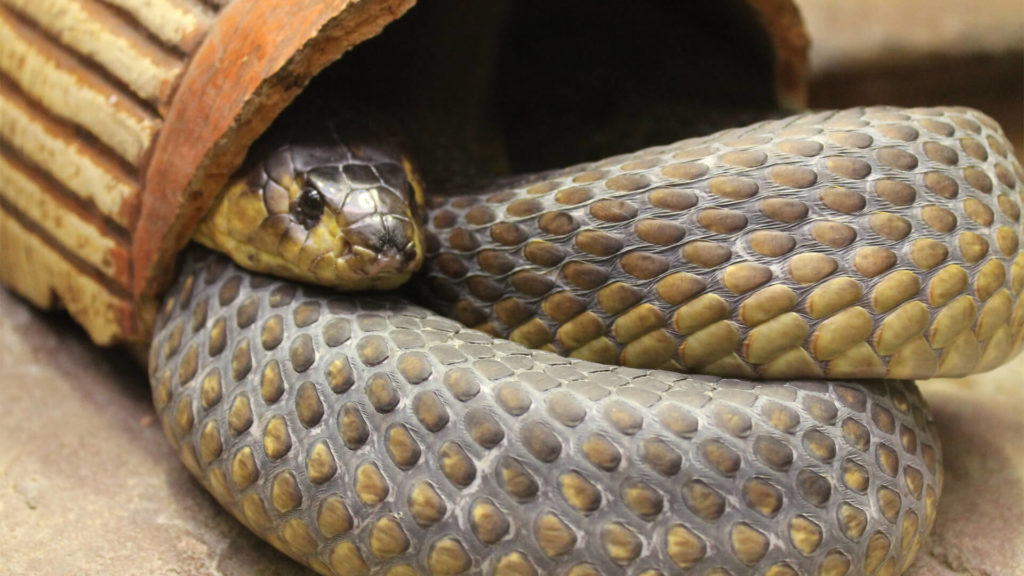
Cobras are famous for their menacing stance, which scares off potential predators to save precious venom. The typical "hooding" display is due to the cobra flattening its neck ribs and raising a third of its body of the ground, which they only do when they are threatened.
This snake comes in shades of brown and black with banded or mottled patterns, and with a contrasting color band on the underside of their neck to add to their hooding display. This threatening defense is matched by their neurotoxic venom. Often only falling victim to a mongoose, little else is a match for the cobra. These thick-bodied snakes are nocturnal, hunting a variety of prey. They use their venom to paralyze their prey and then consume it within fifteen minutes.

Ever see a snake charmer "charming" a cobra out of a basket with a pungi? It's actually just a trick! Snakes don't have ears to hear the music, they simply follow the movement of the charmer's instrument.

Dave
These snakes are highly revered in Egypt and referred to as an Asp, which describes the several venomous snake species of the Nile region. It is often believed to be the snake that Cleopatra was bitten by.
Central and Northern Africa
grasslands, semi-arid regions
5–7 feet (1.5–2 meters)
small mammals, toads, eggs, lizards
mongoose
venom, flattening neck to appear larger
Up to 20 eggs per clutch
Vulnerable
20 years
